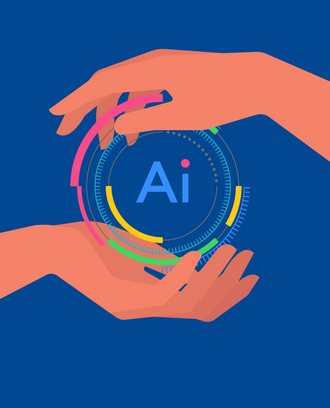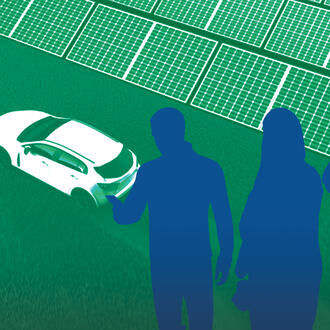Credit: Stephen Sauer
As the world navigated another year of the pandemic era, leaders and managers faced economic and geopolitical turmoil, workers reevaluated their jobs and priorities, and everyone witnessed the environmental toll that rising temperatures took on the planet.
Here are seven books from MIT Sloan faculty and experts to make sense of the past year and prepare for the future.
The Work of the Future: Building Better Jobs in an Age of Intelligent Machines
MIT professor of economics David H. Autor; MIT professor of aeronautics and astronautics David A. Mindell; Elisabeth B. Reynolds
In the 1980s, three things happened: a deep recession hit the manufacturing sector, triggering the rise of imports; the Reagan administration and many employers took actions that weakened unions; and the tech industry entered an era of booming growth. The result was a widening gap between productivity and wages, and workers not benefitting from the surge in technological innovation.
Based on research from the MIT Task Force on the Work of the Future, this book proposes that digital innovation doesn’t have to be the enemy of human labor, as long as better jobs are created to match technological change.
Working With AI: Real Stories of Human-Machine Collaboration
Thomas H. Davenport, digital fellow at the MIT Initiative on the Digital Economy; Steven M. Miller
A look at 29 examples of humans working with AI-enabled systems, this book shows when and how artificial intelligence works best and how companies can use AI responsibly.
The common theme is that AI is augmenting the work that humans do, not fully automating it. That means many jobs are safe, Davenport said during a recent webinar hosted by MIT Sloan Management Review.
Hidden Games: The Surprising Power of Game Theory to Explain Irrational Human Behavior
MIT Sloan research scientists Moshe Hoffman and Erez Yoeli
The two researchers explore the less obvious ways game theory explains human behavior, from the ways athletes and scientists develop and pursue passions to why people enjoy certain pieces of art, eat certain foods, or donate to GoFundMe campaigns instead of high-impact charities.
Yoeli and Hoffman argue that people are bad at optimizing when they rely on their conscious minds to do so. But when people unconsciously rely on learned tastes and beliefs, they behave more optimally. The authors apply their argument, with mathematical models, to explain everything from why people like expensive watches to the ratio of males to females in animals.
Persuading with Data
MIT Sloan senior lecturer
In Kazakoff’s instructional guide, he offers a toolkit for creating and designing effective graphs, and also “how to use visuals to create effective communications that convince an audience to accept and act on the data.”
Kazakoff draws on real-world examples as well as academic perspectives to teach readers how to design data visualizations, organize ideas into a presentation, and deliver that data to an audience.
“Readers will learn how to simplify in order to amplify, how to communicate data analysis, how to prepare for audience resistance, and much more,” according to a summary.
The Job Is Easy, The People Are Not! 10 Smart Skills To Become Better People
MIT Sloan international faculty fellow Loredana Padurean
After 50 years of categorizing qualities like problem solver, strong communicator, and good listener as “soft,” it’s time for a change, according to Padurean.
“Pitching and presenting projects is not a tender act. Handling and delivering critical feedback is not mild, and dealing with office politics is certainly not for the weak. So why do we still refer to them as soft?” she writes.
In her book, Padurean outlines 10 “smart” skills to help managers navigate what she says is the one variable that always creates complexity: people.
Climate Future: Averting and Adapting to Climate Change
MIT Sloan professor of finance and economics
In his book, Pindyck asserts that counting on a best-case emissions scenario isn’t effective policy. He posits that global warming might persist despite mitigation efforts. Even if the United States and Europe — which currently account for 30% of global carbon dioxide emissions — were to reduce their emissions next week to zero (an unlikely scenario), that would still leave 70% of emissions unaccounted for.
Instead, the book offers actionable solutions for adaptation, such as geoengineering and developing new hybrid crops.
“Reducing emissions is not enough; to ensure against a catastrophic climate change outcome we need to invest now in adaptation,” he writes.
Future Ready: The Four Pathways to Capturing Digital Value
Stephanie L. Woerner; Peter Weill; Ina M. Sebastian — all research scientists at the MIT Center for Information Systems Research
Scientists from the MIT Center for Information Systems Research found companies that have executed a digital transformation have significantly higher financial performance — with average revenue growth of 17.3 percentage points and net margins of 14.0 percentage points above industry averages.
Yet a study of 1,311 global firms found only 22% are what CISR researchers call “future ready” — that is, having gone through business transformation that allows them to leverage digital capabilities to innovate, engage, and satisfy customers while reducing costs. This new book offers guidance to leaders whose companies haven’t yet reached that state.



